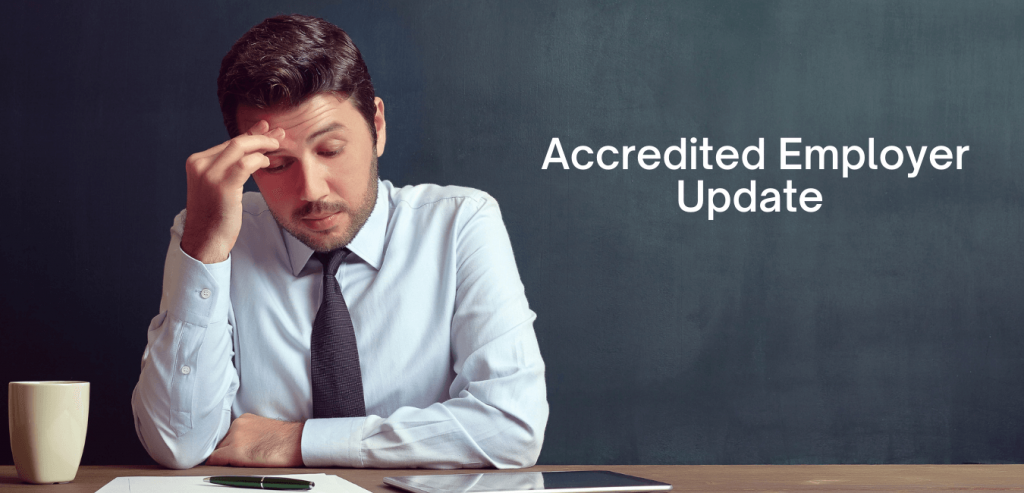Accredited Employer Visa reform leaves more questions than answers

The new accreditation system for hiring migrant workers is just six months away, yet there’s still so much we don’t know. Immigration lawyer Aaron Martin’s in-depth analysis of the latest documents from INZ reveals some startling findings.
Last week, Immigration New Zealand announced early details of its Accredited Employer Work Visa (AEWV), which will replace six work visas and usher in a raft of reforms starting 1 November. The new employer-led, three-check system aims to reduce our reliance on low-skilled temporary workers and kerb exploitation while simplifying the process for employers by reducing labour market test requirements. Employers will be able to apply for accreditation from late September.
The goal of the new system is to address productivity, skills, and infrastructure challenges and increase the skill levels of migrants coming to New Zealand, but will it? The policy details given so far aren’t particularly detailed, even after 18 months of work by INZ. INZ claims they have everything mapped out and it’s just with the minister and cabinet for approval. They’ll get it to us in June or July. No rush or anything!
Accredited employers who wish to hire migrants under the existing work-to-residence scheme will have to get them a work-to-residence visa by the end of October. Employers who need to use the existing scheme will have to get accredited first and file by 30 June. Being unaware or not on top of those timings is going to land many people in a pickle.
Issues for employers
Employers accredited under the current system will need to apply for “new accreditation” if they want to continue hiring migrants, but we still don’t know what they have to do to apply. Fill out an online form and pay a fee? Of course. Add more documents? Who knows.
Employers who don’t plan to start hiring migrants don’t need to be accredited in the new system by 1 November, but what’s going to happen with already-hired workers whose visa is coming up for renewal? We have no idea! This unclear “start hiring” wording may lead employers to think they don’t have to do anything about their existing workforce, which isn’t the case.
Businesses had expected that accreditation status would depend on the number of migrant workers they employ in a year, but it’s actually at any one time. This creates problems when needs fluctuate, as they usually do. If you surpass the five-migrant threshold and have to transition from standard and high-volume accreditation, how do you do that? Assuming you have to go back to the beginning and apply for high-volume accreditation, this could produce a lot of frustrating false starts.
Employers placing migrants with third parties, including labour hire companies, must demonstrate that at least 15 percent of their workforce are New Zealanders in full-time employment. This requirement assumes that’s actually possible, but what if you’re operating in an area of massive skills shortage like construction? You may not actually have that choice. And if New Zealanders don’t want a job, it’s not always because of the pay. Often, it’s because they don’t see it as an aspirational career, and no amount of pay or upskilling is going to solve that.
In the cities, jobs that are on a skills shortage list and pay above or at the median wage won’t require a labour market test, but cities are defined only as Auckland, Hamilton, Wellington, Christchurch, and Dunedin. What about New Plymouth, Tauranga, and other cities experiencing rapid growth? They are just as in need of skilled workers, if not more so, yet may not benefit from this change.
Why are we punishing employers?
INZ says that the new three-check system will be simpler and combat migrant exploitation by “strengthening compliance requirements on employers.” How is more compliance simpler? Each of these “streamlined” steps involves many parts. You may gain accreditation status, pass the job check, yet still be told by INZ that your candidate doesn’t meet the experience requirements, which is a lot of jumping through hoops for nothing. How is that more productive?
Expecting employers to improve productivity is rich, coming from an organisation that makes one decision per day and has a two-year backlog in the skilled migrant category. From an HR perspective, it will actually make businesses less productive because they’ll be tied up in all the red tape of compliance. I expect we’ll see a lot of casualties along the way, and businesses will end up having to seek help – yet another added expense.
Skilled migrants are generally well-informed and not in need of handholding, particularly in the age of the Internet, yet INZ is requiring employers to provide employment rights training and pastoral care. Your IT specialist who comes to New Zealand has probably worked in three different countries already, so why impose these rules on every employer because of a few bad eggs?
On top of paying migrant workers to complete online employment rights training, the employer must pay to get accredited, pay for the job check, and, if holding standard accreditation, pay all recruitment costs (including any incurred offshore), but how on earth is INZ going to enforce that? It feels like INZ is using this as a revenue-generating exercise, but we don’t even know what it will cost.
Accredited employers have accreditation status in the first place because they’re good employers with good practices. We should ease their transition by setting a low fee and not requiring much additional evidence to gain standard accreditation. If they then wanted to upgrade to high-volume status, they would do that as an add-on. That would be the fair thing to do, but Jacinda promised kindness, not fairness.
Issues for migrant workers
If a job pays 200 percent of the median wage, no labour market test is necessary – good for employers in a few cases but bad for migrants. In the past, the work-to-residence threshold was $79,560. Now workers will only be eligible for residence if they’re paid at or over $106,080, and if they increase the median wage to $27 per hour, the threshold will be $112,320. That’s not many roles and eliminates even senior nurses. You’re mostly looking at doctors, senior IT professionals, and engineers.
The reform is intended to protect migrant workers from exploitation, yet it doesn’t apply to all migrant workers – only the well-paid ones, who obviously need it less. It still gives companies the option of hiring migrants with open work visas to avoid accreditation status. Employers who don’t meet minimum accreditation requirements will simply resort to employing students, post-study work visa holders, and partnership work visa holders to fill low-skill jobs in horticulture, hospitality, and retail.
The AEWV will still have conditions specifying an employer, job, and location, and any change will require a variation of conditions. This is the very issue that causes the exploitation – one that is easily resolved, yet INZ has done nothing about it.
If you’re on the work-to-residence programme, you’ll be able to continue if you remain with your current employer. But what if your employer chooses not to get accredited or tries and fails? The migrant worker must hold a work-to-residence visa while their residence application is being processed, so will they have to apply for variation of conditions and pay for that, simply because Immigration has changed the rules?
Who exactly are these immigration law changes for?
Who does this benefit overall, other than INZ? No one. The new process is more difficult and costly for employers and will offer fewer opportunities for migrants. INZ says this will protect them from exploitation, but if employers are determined to exploit workers, I don’t see how this will stop them.
A petition presented by the Greens and the Migrant Workers Union says that visa conditions that tie workers to employers are a major contributor to exploitation. If immigration New Zealand really wanted to protect migrant workers from exploitation, they would create a skilled work visa not linked to individual employers rather than reinforcing it, as they are doing here.
What will the implications be for the migrant workers? We don’t yet know. As disheartening as it is to hear, all you can do is worry and wait – or head for Australia.
For the latest immigration news and insightful opinions, subscribe to our blog and follow us on Facebook.




